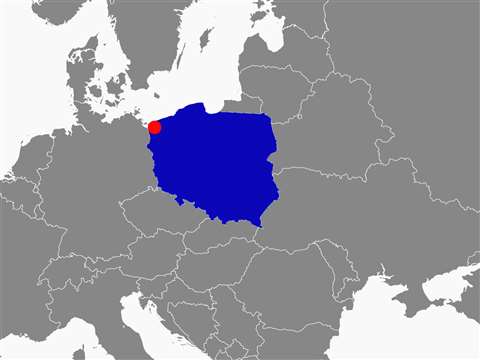Porr consortium for tunnel
19 September 2018

The 3.2km tunnel at Świnoujście, Poland, will be built by a consortium consisting of Austrian-based Porr, Turkey’s Gulermak and Polish company Energopol-Szczecin.
The contract for the €150 million project was signed in the presence of Polish Prime Minister Mateusz Morawiecki.
The project, which is expected to take 48 months to complete, includes a 1.44km TBM (tunnel boring machine) excavation using the slurry shield method. The breakout diameter of the tunnel will be 13.5m.
A two-way roadway will be constructed consisting of traffic lanes with a width of 3.5m, and evacuation niches will be built using ground freezing.
The project will be implemented by the consortium as a design and build contract. Once the tunnel is completed in the autumn of 2022, it will provide a direct connection between Uznam and the Polish mainland. It is expected that the journey time will be reduced to just a few minutes as well as significantly improving the connection to Polish holiday areas in West Pomerania.

Karl-Heinz Strauss, CEO of Porr, said, “The Świnoujście tunnel is one of our key infrastructure projects in Poland. In co-operation with our Porr colleagues from Poland and Austria, as well as the experienced experts from Gulermak and Energopol-Szczecin, we will demonstrate our construction expertise and innovative strength.”
Piotr Kledzik, president of the board of Porr’s Polish arm, said, “The design and build project in Świnoujście requires a high degree of flexibility and expertise in technical solutions. The contract awarded to our consortium once again confirms the excellent reputation that Porr enjoys in Poland.”
The Polish city of Świnoujście extends over the eastern part of the island of Uznam as well as over the islands of Wolin and Karsibór. Uznam is home to an administration centre, as well as a seaside resort with tourist and health resort facilities. About 80% of the inhabitants of Świnoujście live on Uznam.
Uznam and Wolin are separated by the Świna river, an arm of the Baltic Sea. Traffic between the islands is currently carried out via ferry connections. As a result of the heavy use of the ferry crossings, waiting times during the holiday season can be up to several hours. Also, weather conditions can make ferry operations difficult.




